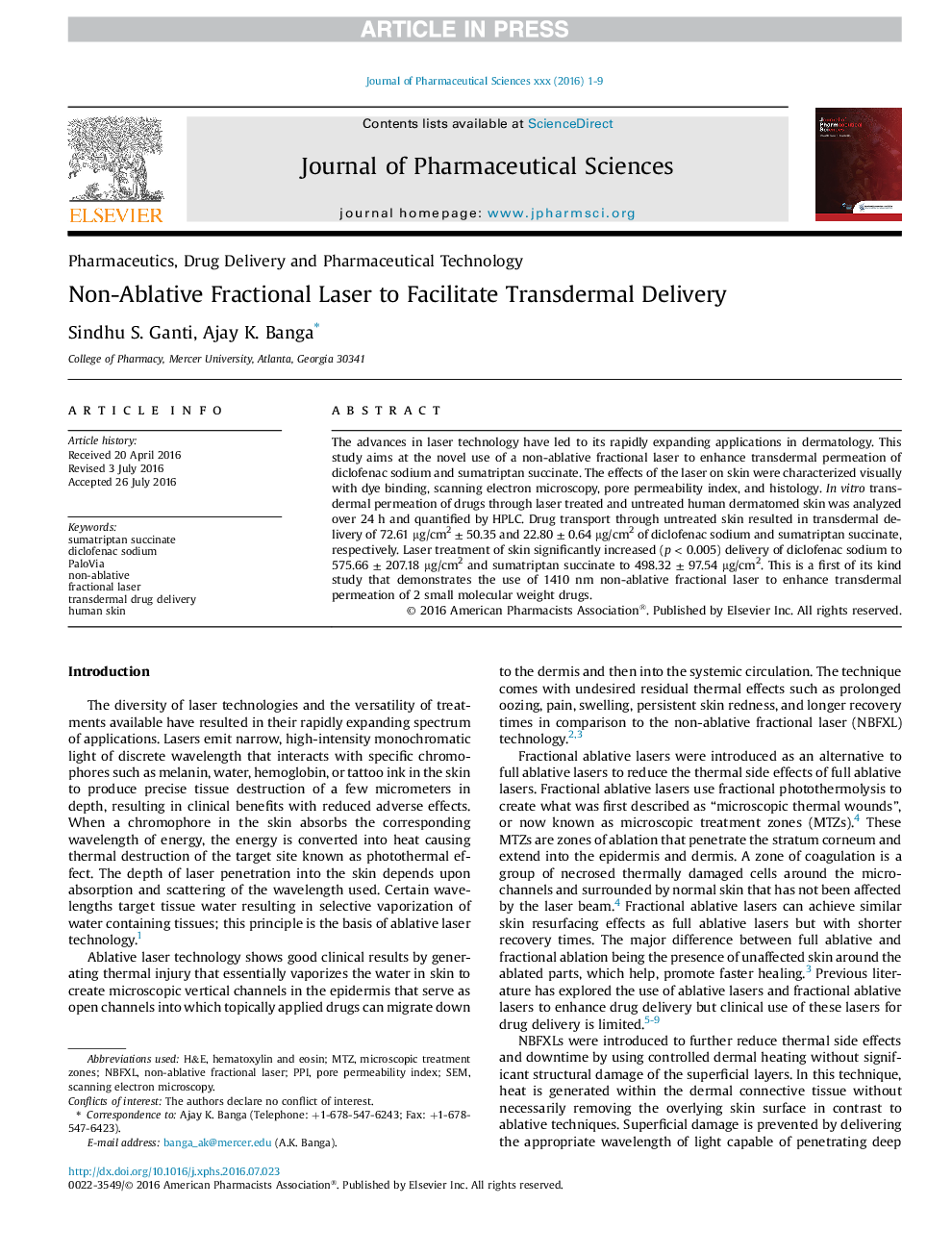| Article ID | Journal | Published Year | Pages | File Type |
|---|---|---|---|---|
| 8514742 | Journal of Pharmaceutical Sciences | 2016 | 9 Pages |
Abstract
The advances in laser technology have led to its rapidly expanding applications in dermatology. This study aims at the novel use of a non-ablative fractional laser to enhance transdermal permeation of diclofenac sodium and sumatriptan succinate. The effects of the laser on skin were characterized visually with dye binding, scanning electron microscopy, pore permeability index, and histology. In vitro transdermal permeation of drugs through laser treated and untreated human dermatomed skin was analyzed over 24 h and quantified by HPLC. Drug transport through untreated skin resulted in transdermal delivery of 72.61 μg/cm2 ± 50.35 and 22.80 ± 0.64 μg/cm2 of diclofenac sodium and sumatriptan succinate, respectively. Laser treatment of skin significantly increased (p < 0.005) delivery of diclofenac sodium to 575.66 ± 207.18 μg/cm2 and sumatriptan succinate to 498.32 ± 97.54 μg/cm2. This is a first of its kind study that demonstrates the use of 1410 nm non-ablative fractional laser to enhance transdermal permeation of 2 small molecular weight drugs.
Keywords
Related Topics
Health Sciences
Pharmacology, Toxicology and Pharmaceutical Science
Drug Discovery
Authors
Sindhu S. Ganti, Ajay K. Banga,
